If there's one good thing - although it is only a small thing - that might emerge from the America's Cup legal match which has endured these past months, it's that we might have a better definition of a keel. But I doubt it.
Yes, it's a month since I last wrote about keel-gate, and things really haven't moved very far since. If only someone had done a bit of proofreading at the Golden Gate Yacht Club (GGYC) before they issued their ill-fated Challenge document to the Societé Nautique de Genéve (SNG), and that blasted definition, ‘keel-yacht' might never have surfaced.
Alinghi has wheeled out all manner of experts to affirm that the term ‘keel-yacht' could never be applied to a multihull. Nigel Irens, designer of some of the fastest around-the-planet multihulls, has never in his 30 years of yacht design heard the term applied to a multihull. Note also however, as Irens admitted in his statement, that he is currently working in the pay of Alinghi.
Other great minds, such as superyacht designer Ron Holland, have weighed in with the alternative view: "Regarding the latest analysis of Keel yacht versus Multihull terminology, I think it should be noted the keel of any vessel - (including racing yachts) has traditionally
been the primary centerline structural member of the hull. Monohulls have one and Catamarans have two.
While recent developments in composite hull construction have replaced the ‘Keel Centerline member' with overlapping laminates, it could be argued this increased hull shell thickness can still be called the ‘Keel area' of the hull."
So, in short, a keel-yacht can be whatever you want it to be. It is a bogus term, and as such, should be disregarded from the argument. But not where lawyers are concerned. This verbal nitpicking is meat and drink to them, and the very future of the America's Cup pivots on such trivia.
Meanwhile, the rest of the once thriving America's Cup world is turning to custard. United Internet Team Germany has laid off most of its staff and gone into hibernation. Team Origin has gone into a similar ‘sleep mode', with some of its staff working on half-pay as they seek other freelance work to help pay the bills.
Good news may be in short supply around the Cup right now, but there has at least been good news for Alinghi's former headsail trimmer Simon Daubney, who has been deemed not to have infringed the Anti-Doping Rules. It brings a fraught, potentially career-ending chapter to a happy conclusion for the four-time Cup winner.
Back in September Daubney went before the jury of the 32nd America's Cup after traces of a 'recreational drug' were found in a routine urine sample taken on 23 June, the first day of racing of the 32nd America's Cup in Valencia. At the time Daubney protested his innocence believing that perhaps a drink he had consumed had been spiked. He underwent a lie-detector polygraph test to confirm this.
So now he's in the clear, although whether or not he goes back to Alinghi is another matter. As I mentioned in last month's diary, Alinghi crewmembers have been having a bit of fun in Valencia, learning the rudiments of multihull racing on their two Extreme 40 catamarans. Not to be outdone, BMW Oracle has just taken delivery of its own Extreme 40 to Valencia.
Can you see a solution emerging here? If I were Justice Cahn, I'd hand down an order to settle the 33rd America's Cup in a one-design match race between identical 40-foot catamarans. May the best man win, and get on with staging the 34th America's Cup.
Ludicrous, ridiculous, I hear you say. Yes it is. But is it as ridiculous as some of the world's greatest sailors and yacht designers arguing over the definition of a ‘keel-yacht'?It's been another month where only the lawyers are enjoying the ho-hum John Grisham court drama that is the 33rd America's Cup. Never have so many great minds been engaged in an argument over such meaningless trivia, with no one able to agree on what exactly is a ‘keel-yacht'.

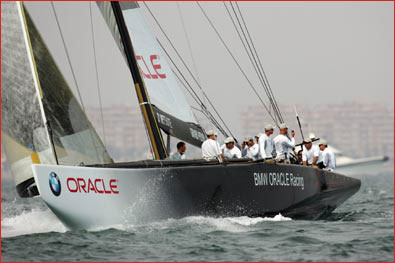 BMW Oracle has been carrying out some extensive TV trials of monohulls and multihulls in Valencia. The aim, says the Defender, is to work out which kind of boat is going to offer the biggest bang for buck in Russell Coutts’s vision of a more media-friendly and commercially-attractive America’s Cup...
BMW Oracle has been carrying out some extensive TV trials of monohulls and multihulls in Valencia. The aim, says the Defender, is to work out which kind of boat is going to offer the biggest bang for buck in Russell Coutts’s vision of a more media-friendly and commercially-attractive America’s Cup...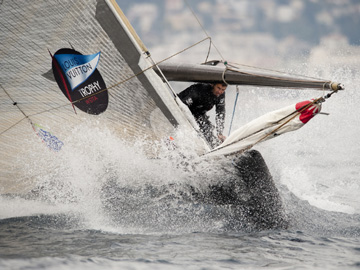 Louis Vuitton has been an integral part of the America’s Cup since the luxury goods company first gave its name to the Louis Vuitton Challenger Series back in Newport 1983. That close association continued up to Valencia 2007, but following Alinghi’s successful defence of the Cup, Louis Vuitton withdrew its backing...
Louis Vuitton has been an integral part of the America’s Cup since the luxury goods company first gave its name to the Louis Vuitton Challenger Series back in Newport 1983. That close association continued up to Valencia 2007, but following Alinghi’s successful defence of the Cup, Louis Vuitton withdrew its backing...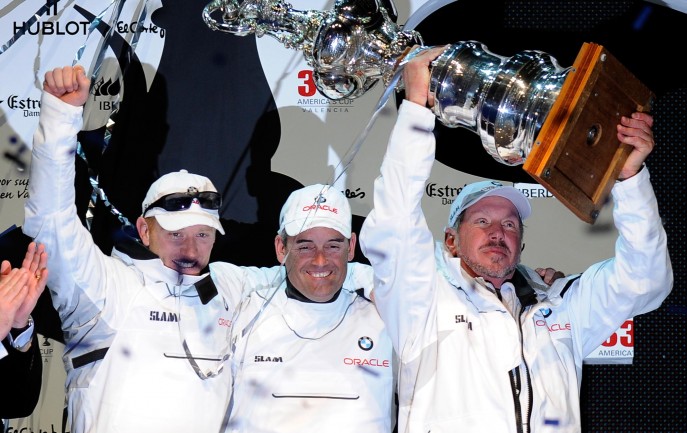 So now we’ve seen the power of wing rigs in action in the America’s Cup, what possibility of a trickledown of technology into other forms of sailing? What about superyachts? BMW Oracle’s design team director Mike Drummond observed, tongue in cheek: “If you go to Wings R Us.com, you can get any size you like.” Of course, this technology is anything but off the shelf, but nor is it new, as Drummond also pointed out: “Wings are not new, they’ve been used by birds for quite a long time...
So now we’ve seen the power of wing rigs in action in the America’s Cup, what possibility of a trickledown of technology into other forms of sailing? What about superyachts? BMW Oracle’s design team director Mike Drummond observed, tongue in cheek: “If you go to Wings R Us.com, you can get any size you like.” Of course, this technology is anything but off the shelf, but nor is it new, as Drummond also pointed out: “Wings are not new, they’ve been used by birds for quite a long time...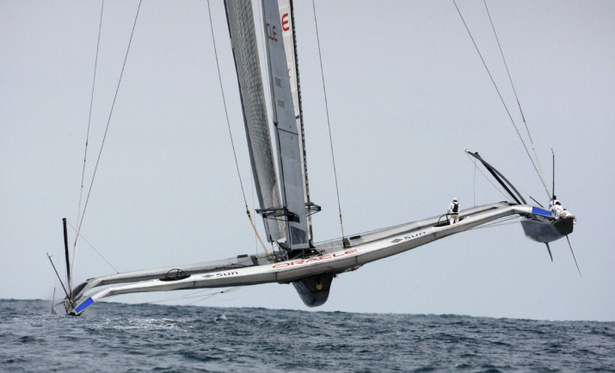 So now we know. Wings trump sails. Theory has always stated that a wing rig should be faster than conventional sails. But the challenge was actually to put a wing rig into practice, to be able to build it in less than six months, and also to manage the logistics of it...
So now we know. Wings trump sails. Theory has always stated that a wing rig should be faster than conventional sails. But the challenge was actually to put a wing rig into practice, to be able to build it in less than six months, and also to manage the logistics of it...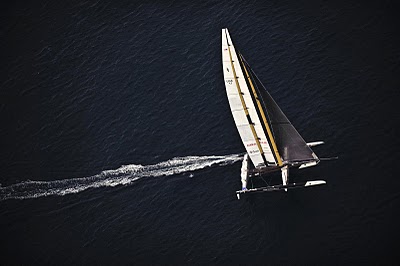 Race 2 was set to take place two days later on the Sunday. It was another long wait while Harold Bennett looked for suitable conditions in which to start the race. The cut-off time of 4pm was just minutes away when Bennett called for the start procedure to begin...
Race 2 was set to take place two days later on the Sunday. It was another long wait while Harold Bennett looked for suitable conditions in which to start the race. The cut-off time of 4pm was just minutes away when Bennett called for the start procedure to begin...